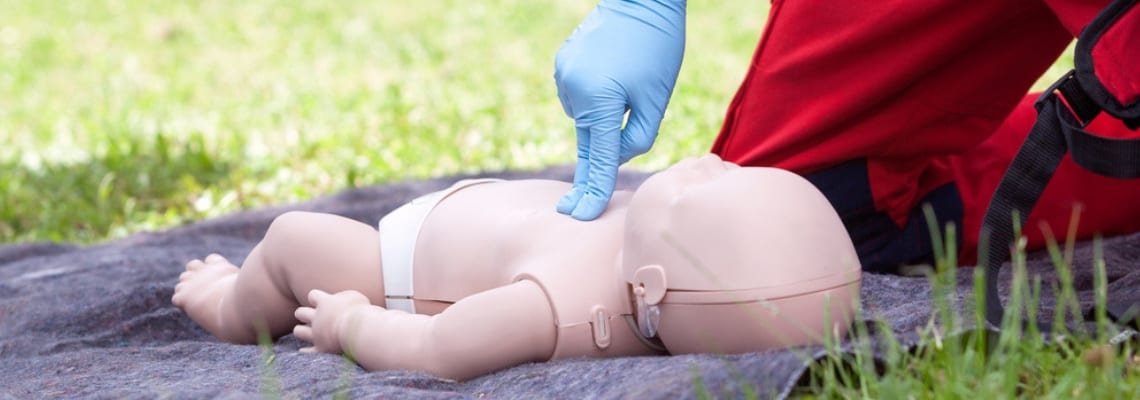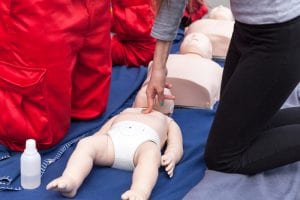
Parenting is stressful—we bring our precious bundles of joy home from the hospital, and we are now charged with sustaining them all the way into adulthood. WHAT?! How are we supposed to do that? Is there a manual or something we can follow, and what do we do if we encounter emergencies and other issues?
The Importance of First Aid
No one ever tells you that you may be required to save your child’s life at some point. Unless you are in the minority, having taken first aid classes and received CPR certifications prior to getting pregnant, you are likely unprepared for many of the emergency scenarios that might be a part of your parental story.
It’s time that you learned some of the basics of first aid to ensure you and your children are safe in almost any situation. Whether your kids are 20 days, 20 weeks, 20 months or 20 years old, it is beneficial to know some basic care steps when dealing with emergencies. You never know whose life you might save.
Choking
Choking is a hazard that can happen to almost anyone. When someone chokes, their airway becomes blocked, leaving them with a lack of oxygen running to the brain and other vital systems in the body. If a person is deprived too long of life-giving oxygen, it can result in death. If a person is unable to cough, speak, or breathe, they are in danger of choking to death, and something must be done immediately to prevent lasting damage.
The most common way to deal with a choking baby, toddler, or child is to perform the Heimlich maneuver. Although the basic steps are different for each age level, the concept is the same—unblock the airway and ensure that the victim is breathing once more.
Follow these steps for each stage of life:
1. Infants under one year: Place the infant face down across your forearm; support your forearm with your thigh. With the heel of your hand, give four forceful blows to the middle of the back. Turn the infant over, and with two fingers about an inch below the nipples in the middle of the chest, give four forceful thrusts at a depth of about one inch. Repeat these two steps until the blockage is coughed or forced out.
2. Children ages one to adulthood: Stand or kneel behind the person choking and wrap your arms around their waist. Make a fist with one hand and with the thumb side out, place it just above the belly button. Wrap your other hand around the stationary hand and give quick, forceful thrusts into the abdomen until the object is ejected or the person faints. If they faint, do not perform any abdominal thrusts; switch instead to performing CPR.
Cardiopulmonary Resuscitation
 Speaking of CPR, it is essential that every parent have knowledge of—and preferably trained in—how to administer CPR if someone is found unconscious and not breathing. The victim cannot tell you at that point what occurred, so it is essential that you check several things prior to beginning CPR to prevent further injury or death.
Speaking of CPR, it is essential that every parent have knowledge of—and preferably trained in—how to administer CPR if someone is found unconscious and not breathing. The victim cannot tell you at that point what occurred, so it is essential that you check several things prior to beginning CPR to prevent further injury or death.
For example:
1. Check the scene. Ask yourself if it is dangerous or unsafe. If you are physically able to get to the victim, approach with caution.
2. If the child is five or older, tap them on the shoulders and yell very loudly in an attempt to rouse them. Do not shake or hit the victim, or you may cause further injuries to occur.
3. If the child or infant is four or younger, tap on the bottom of their foot in an attempt to rouse them. Again, using your voice very loudly to gain their attention will let you know pretty quickly if they are only sleeping or if something more serious is taking place.
Once it has been determined that the victim is unconscious and not breathing, it is time to begin CPR.
CPR for Infants
Lay the child on his back and tilt the head back so that the chin is slightly elevated. With two fingers, locate the center of the chest about one inch below the nipples and begin 30 chest compressions about one-inch deep. If the child is not breathing or roused, place your mouth gently over the nose and mouth of the child and administer two gentle breaths. Continue with these alternating actions until help arrives or until the child regains consciousness.
CPR for School-Age Children, Teens and Adults
Lay the victim on his back and tilt the chin back so the airway becomes open. Place one of your hands on top of the other, interlace fingers and place heels of the hands in the center of the chest just below the breastbone. With elbows locked and using your bodyweight, deliver 100 chest compressions per minute, then alternate with rescue breaths. Pinch the nose shut and cover your mouth completely over the victim’s mouth, delivering two rescue breaths. Alternate chest compressions and rescue breaths until the victim regains consciousness or until help arrives.
Keep in Mind
We don’t like to think about the possibility of having to use this knowledge, but it is this essential lifesaving information that you can use to save the life of a loved one. The more you know, the more likely you can take action and make a difference in a situation where you once would have been powerless. Embrace this new responsibility, and have confidence in the fact that you can use it to help others.


